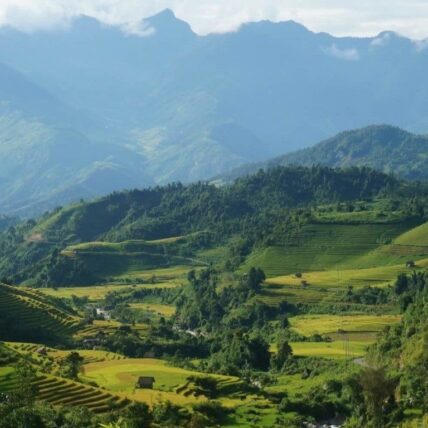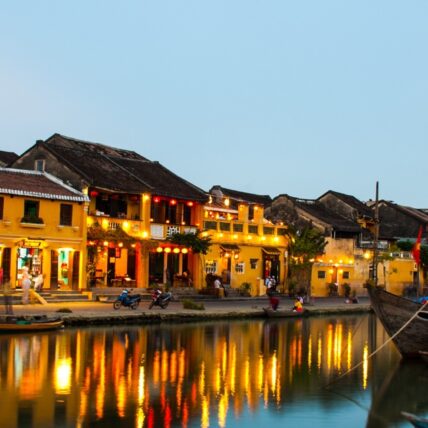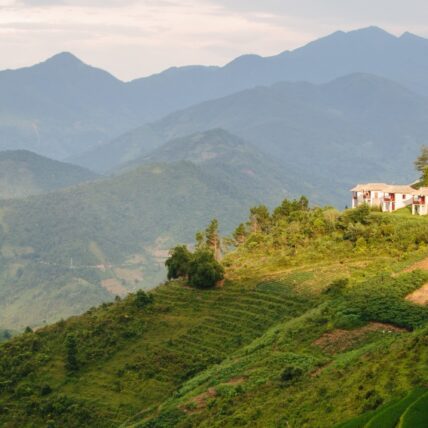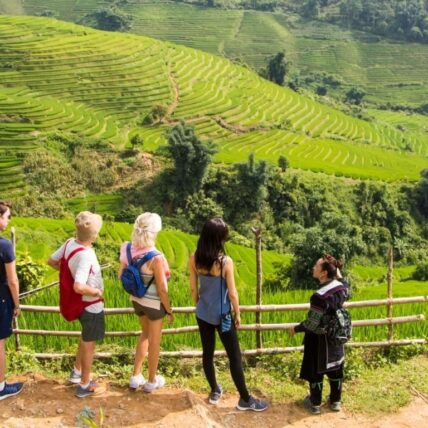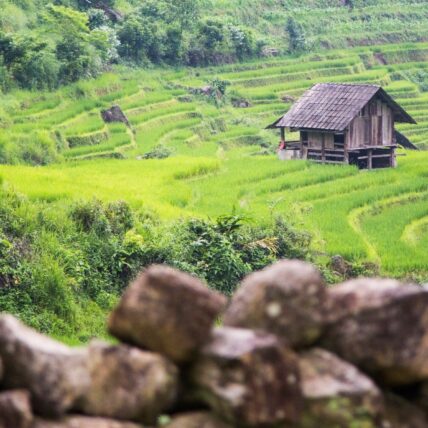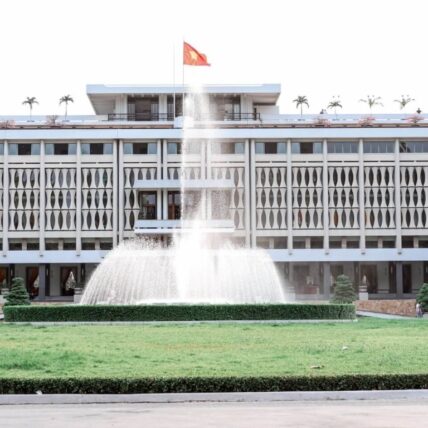Weather in Vietnam
When is the best time to travel to Vietnam?
The weather in Vietnam is very varied due to the great distance from north to south. Vietnam extends from the mountainous Van Don province to the north, and 1600 km to the south, to the mouth of the lush Mekong Delta.
Vietnams weather and climate
Vietnam thus has both subtropical and tropical climate. In northern Vietnam’s mountainous areas, on the border with China, you can experience temperatures approaching the freezing point and even see snow on top of the country’s highest mountain Fansipan at Sapa. In South Vietnam, on the other hand, you will encounter classic warm equatorial climate.
When is the best time to travel to Vietnam?
Vietnam’s climate diversity means that there are NOT bad times to travel to Vietnam. There are always areas with comfortable climate. When you travel to Vietnam you therefore have a certain influence on what conditions you are going to travel under, it just depends on where and when you visit the country.
When you look at the weather in Vietnam you can roughly divide it into 3 regions:
North Vietnam
Is where you will find Vietnams capital Hanoi, the Mountain city Sapa with beautiful rice terraces and the UNESCO protected Halong Bay.
Central Vietnam
Endless white sandy beaches at Da Nang, UNESCO protected Hoi An, the former imperial city Hue and worlds largest cave Son Doong is found here.
South Vietnam
Here you can visit the mighty Mekong Delta, fast growing Ho Chi Minh City, Nam Cat Tien national park, beaches at Mui Ne and Nha Trang and two exotic islands Phu Quoc and Con Dao
Below you can read our guide to the climate and the weather in the different parts of Vietnam:
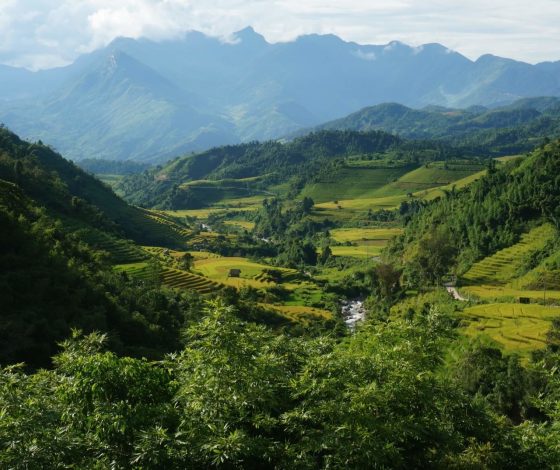
North Vietnam
(Sapa, Ha Giang, Halong Bay and low land around Hanoi)
Recommended time to travel to North Vietnam:
March – April & August – November
March – April:
18-32 degrees. Days of sunshine and days of cloudy. Rarely rain.
August – November
19-30 degrees. Varied weather conditions. Days of rain and days of dry weather.
North Vietnam has four seasons
In the northern areas of Vietnam there are four seasons, as we know it in Denmark. However, the weather in North Vietnam is a lot warmer all year round compared to Denmark. The daytime temperature depends on whether the weather front comes from the cool north or the warmer south. You must be aware that Sapa and Topas Ecolodge are situated at 1600 and 1000 meters respectively, here it can be cool during the months mentioned. The periods are usually characterized by very little rainfall.
In the summer months of Northern Vietnam, May to September you can both experience weather that offers day rain but also cloudless. Often, during the rainy season, heavy rain will fall in the evening and at night when most people are indoors. If the rain falls during the day, this is warm and cool. We like to travel during the rainy season, as most rain can be avoided with an umbrella and, in turn, it is very lush and green.

Weather in Hanoi
Hanoi is a must visit place on your travel to Vietnam. And even though the weather changes during the year, you shouldn’t avoid going there.
The best time to visit Hanoi is from february to april, where temperatures are around 20-25 degrees celcius, and average precipitation is low. In late october temperatures are again on their way down, the same is average precipitation, so this is also a very good time to visit Hanoi.
If you are visiting Hanoi during summer you will experience temperatures around 30 degrees and rainfall every second day in average. Visiting Hanoi in this period will impress you, as the locals really doesn’t bother about the rain. If doing anything, they just stop to put on a rain poncho, and then continue whatever they where doing.
Visiting Vietnam as photographer during the heavy rainfalls will give you some really exceptionel opportunities to capture stunning imagery.
Weather in Sapa
The mountanous region of Sapa right on the border to China is on many travelers wish-list.
The best combination of temperature and low precipitation is during spring or autumn. If visiting Sapa in september you will have the possibility to capture stunning images of the colourful rice terraces covering the mountains.
During summer you will experience rainfall in the Sapa region, so the hiking paths will be more slippery, but the temperatures will be in the 20’s so you will still be warm.
Get inspired from ready made travels which include Hanoi and Sapa
Central Vietnam
(Hoi An, Danang, Dong Hoi & Hué)
Recommended time to travel to Central Vietnam:
February – August
February – August:
Sunshine and dry weather. Between 20-34 degrees. Some rain showers.
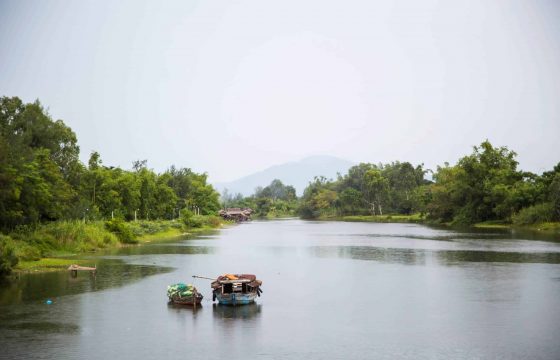
Central Vietnam between mountains and sea
Central Vietnam differs from northern Vietnam, as there are only two seasons. The dry season extends from December to August and the rainy season from September to November.
The weather in Central Vietnam is also varying due to the mountain range, Truong Son, which has great influence on the weather. For example, you will often experience marked temperature and weather differences when the Hai Van pass is crossed between Hue and Danang.
The characteristic of the weather in Mid-Vietnam is that the highlands are slightly cooler than the lowlands. Vietnam is located in a so-called monsoon zone, which means that in central Vietnam you can experience smaller typhoons followed by floods in the period from October to November. Topas has a strong emergency preparedness if such rare situations should arise, we will typically be informed in advance and coordinate the journey in close cooperation with our local topaz employees and you.

Weather in Hoi An
The UNESCO World Heritage City of Hoi An with its diverse arcitechture, lantern filled citycentre and long white beaches is part of many Vietnam travels.
The weather in Hoi An consists of dry and rainy season. To get the best experience of both the city and the beaches we recommend you visit Hoi An during dry season, from february to august. During dry season you will meet temperatures around 25-30 degrees and sea temperatures about the same range.
The rainy season sets in around september and lasts until around december. The most rain will be in october and november, and this is also the time of year where Hoi An occasionally sees floodings. Flooding in Hoi An is not uncommon, so the locals are used to handle it. On walking around the city and surroundings you will se numerous markings of the water level from historic floodings.
Get inspired from ready made travels which include Hoi An and Central Vietnam
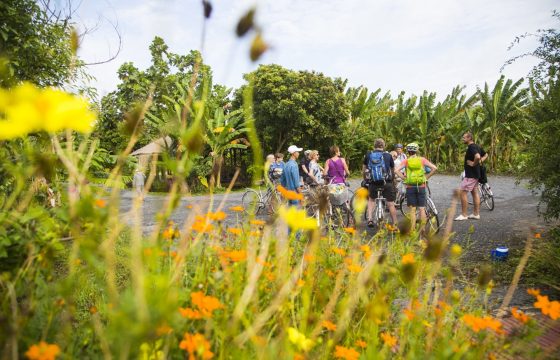
South Vietnam
(Ho Chi Minh City, Mekong Delta, & Phan Thiet)
Recommended time to travel to South Vietnam:
November – April
November – April:
High sunshine. Between 21 – 33 degrees.
Weather in South Vietnam
The weather in South Vietnam belongs to tropical climate, therefore it is warm all year round, from 25 to 35 degrees. The average daytime temperature is about 30 degrees.
South Vietnam has two seasons, the dry season and the rainy season. The rainy season extends from May to October. When it rains in South Vietnam, large amounts of rain fall, typically for 1-2 hours and on average 2 out of 3 days. Due to the heavy but short-lived rains, the humidity is not so high, the large amount of rainfall taken into account.
The dry season in South Vietnam extends from mid-November to April, where there is limited rainfall and thus several days and weeks without rain.
Weather in Ho Chi Minh City
Ho Chi Minh City is located in South Vietnam and has tropical climate. Thus here you will find stable high temperatures year round.
The best time to visit Ho Chi Minh City is during dry season from november to april.
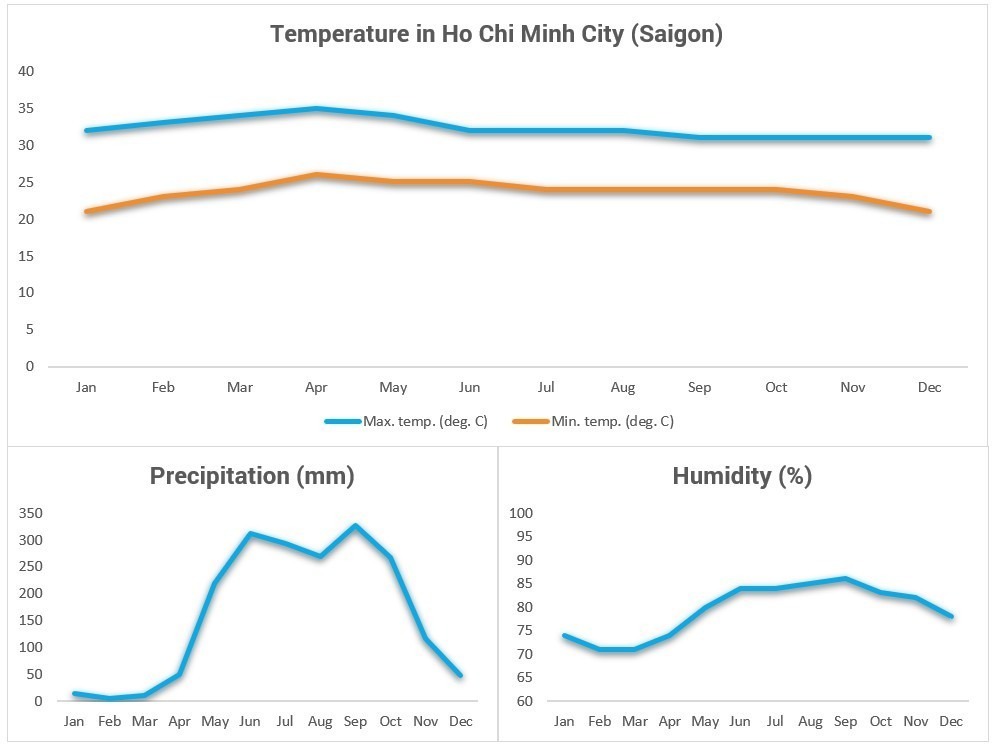
Get inspired from ready made travels which include South Vietnam
When to visit the beaches of Vietnam
Vietnam has a lot of beaches, and many travelers spend the last 3-5 days on the beach before returning home.
Hoi An in the central Vietnam has long white beaches in combination with a historical very interesting city, and the best time to visit the beaches of Hoi An is during dry season from february to august.
Nha Thrang is located further south in Vietnam, and thus has sea temperatures a little higher than in Hoi An. Air temperature is in average in the late 20’s most of the year. The coastline of Nha Trang is more exposed to the south-east, meaning precipitation is much lower here than in Hoi An. Dry season is still the best time to visit Nha Trang, and like Hoi An this is from february to august.
The beaches at Mui Ne and Phan Thiet has even lower precipitation, so here you will also find sand dunes. As with the beaches further north, the peak of rainy season spans a couple of months.
The island Phu Quoc has stable high water temperatures year round, and also high air temperatures. Rainy season is during summer, so the best time to visit Phu Quoc is from november to april.
Read our guide
The 8 best
beaches in Vietnam
From only
1839 EUR/person
Mountains
and beaches
Rainy season in Vietnam
As can be seen from the above weather information, Vietnam has periods of rainy season. Topas travels to Vietnam all year round and has done so for almost 30 years – with happy guests. The rainy season is warm, and often marked by heavy rain for short periods. It therefore feels far from a cold rainy day in Denmark. An umbrella is often the best safeguard, as rainwear quickly gets damp in the heat. In addition, the umbrella can be used as a parasol and screens against the sun the other days.

